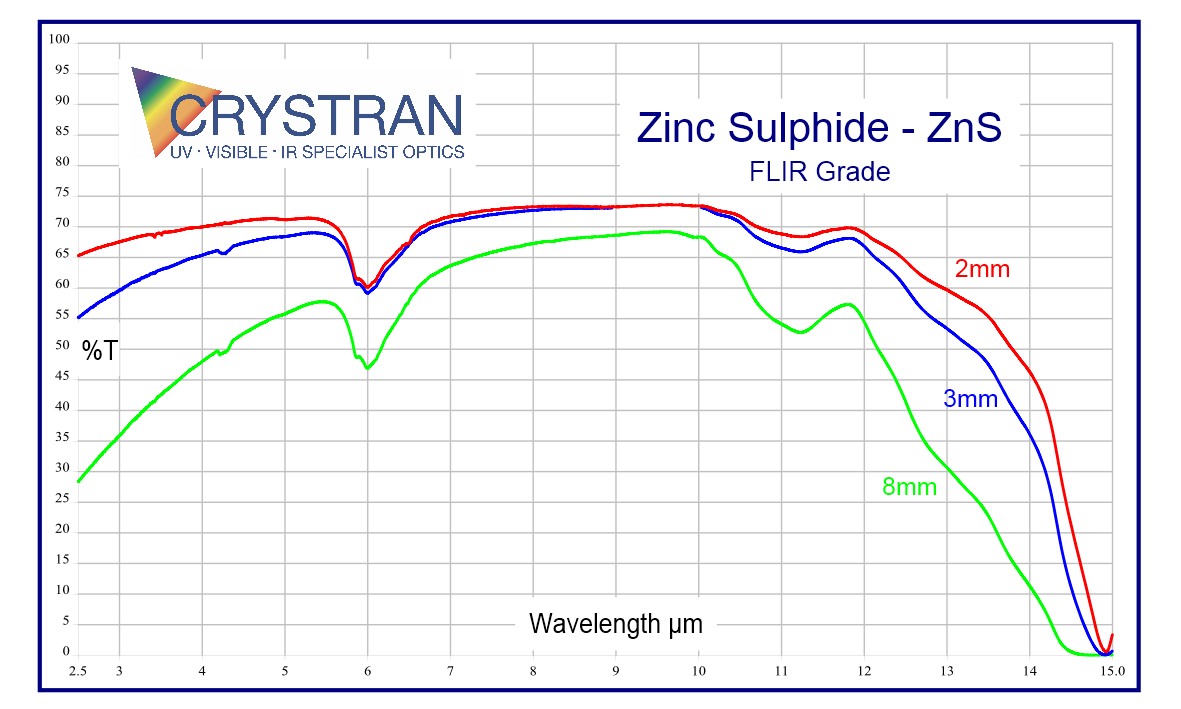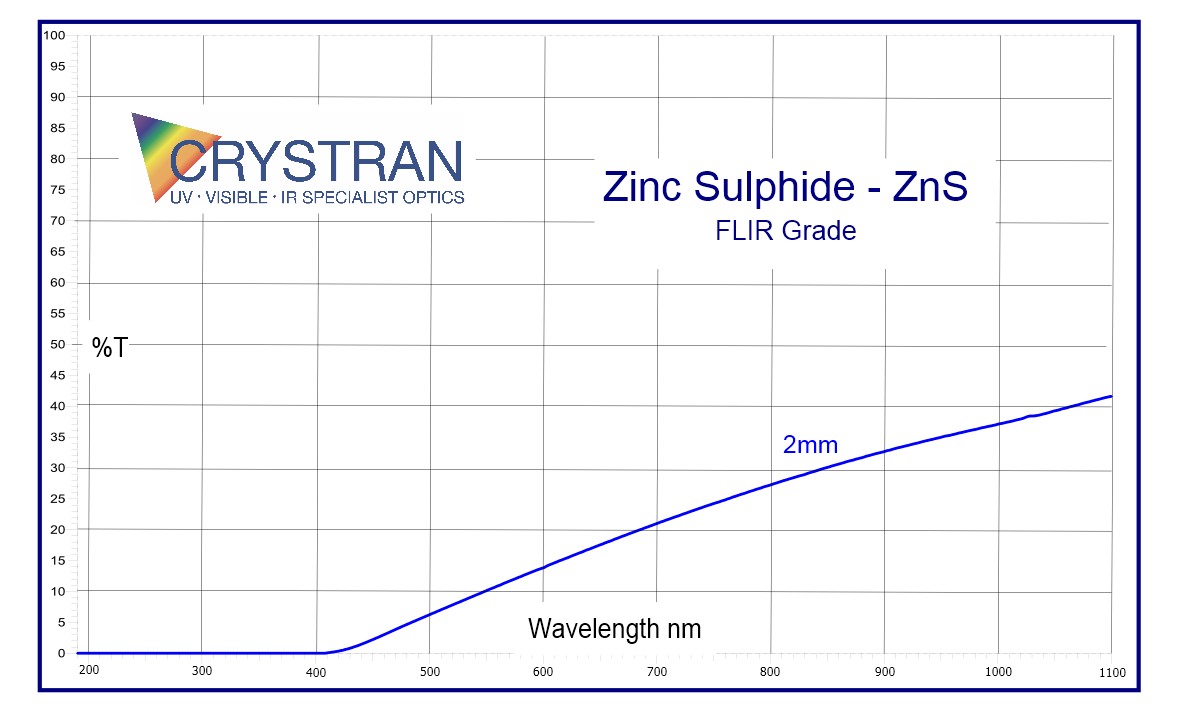

Zinc Sulphide (Zinc Sulfide) FLIR (ZnS)
ZnS FLIR is used for IR windows and lenses in the thermal band (8 to 14 μm) as a tough front optic in thermal imaging systems, particularly those subjected to harsh environments. ZnS FLIR grade is harder than ZnS multispectral grade.




| µm | No |
|---|---|
| 0.42 | 2.516 |
| 0.46 | 2.458 |
| 0.50 | 2.419 |
| 0.54 | 2.391 |
| 0.58 | 2.371 |
| 0.62 | 2.355 |
| 0.66 | 2.342 |
| 0.70 | 2.332 |
| 0.74 | 2.323 |
| 0.78 | 2.316 |
| 0.82 | 2.310 |
| 0.86 | 2.305 |
| 0.90 | 2.301 |
| 0.94 | 2.297 |
| 0.98 | 2.294 |
| 1.00 | 2.292 |
| 1.40 | 2.275 |
| 1.80 | 2.267 |
| 2.20 | 2.263 |
| 2.60 | 2.260 |
| µm | No |
|---|---|
| 3.00 | 2.257 |
| 3.40 | 2.255 |
| 3.80 | 2.253 |
| 4.20 | 2.251 |
| 4.60 | 2.248 |
| 5.00 | 2.246 |
| 5.40 | 2.244 |
| 5.80 | 2.241 |
| 6.20 | 2.238 |
| 6.60 | 2.235 |
| 7.00 | 2.232 |
| 7.40 | 2.228 |
| 7.80 | 2.225 |
| 8.20 | 2.221 |
| 8.60 | 2.217 |
| 9.00 | 2.212 |
| 9.40 | 2.208 |
| 9.80 | 2.203 |
| 10.2 | 2.198 |
| 10.6 | 2.192 |
| µm | No |
|---|---|
| 11.0 | 2.186 |
| 11.4 | 2.18 |
| 11.8 | 2.173 |
| 12.2 | 2.167 |
| 12.6 | 2.159 |
| 13.0 | 2.152 |
| 13.4 | 2.143 |
| 13.8 | 2.135 |
| 14.2 | 2.126 |
| 14.6 | 2.116 |
| 15.0 | 2.106 |
| 15.4 | 2.095 |
| 15.8 | 2.084 |
| 16.2 | 2.072 |
| 16.6 | 2.059 |
| 17.0 | 2.045 |
| 17.4 | 2.03 |
| 17.8 | 2.015 |
| 18.2 | 1.998 |
Zinc Sulphide is produced by synthesis from Zinc vapour and H2S gas, forming as sheets on Graphite susceptors. Zinc Sulphide is microcrystalline in structure, the grain size being controlled to produce maximum strength. Forward Looking Infra-Red (FLIR) grade, which is pale yellow and translucent in the visible, is used as deposited without further treatment. It is stronger than multispectral grade. Single crystal ZnS is available, but is not common.
ZnS oxidises significantly at 300°C, exhibits plastic deformation at about 500°C and dissociates about 700°C. For safety, Zinc Sulphide windows should not be used above 250°C in normal atmosphere.